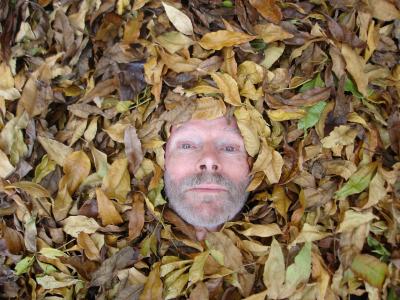“Acting begins with a tiny inner movement so slight that it is almost completely invisible.”
--Peter Brook--
“Learning entails strengthening connections between neurons—by creating more connections between neurons as well as by enhancing their ability to communicate chemically. These changes link neurons in a chain that can be retraced to evoke a certain movement or feeling or thought...”
--Marguerite Holloway--
“When one looks at another person's 'body,' one must realize that he is observing the moving process of that person's mind.”
--Thomas Hanna--
“The mind, say chi kung practitioners, can control and manipulate the flow of energy that is created through proper breathing.”
Nancy Zi
_______________________________________________________________
“Drama” is a word used by the ancient Greeks to mean something like “the thing done,” that is, action. In theatre is related to a conflict or problem which the protagonists must resolve. This implies a double transformation: that of the actors who must adopt the voice, postures, gestures and mental patterns of the characters they are playing and the transformation insinuated by the tension in the play itself.
Expressed in more scientifically we might say that what characterizes the physical universe, and therefore human existence, is transformation: heat turns ice into water, fire converts wood into ashes; actors turn themselves into characters they are not. Everything in is a constant process of change and adaptation to new circumstances: the earth revolves and becomes colder or hotter according to the filtering effect of atmospheric gases, light from the “furthest” celestial body began moving perhaps 14 billion light years ago and perhaps no longer exists; in like manner quasars, our intestines, atoms, quarks and an infinite number of objects are undergoing alterations. What characterizes the universe is…an unending gush of energy.
Thus, an essential characteristic of the human mind is to organize its overall response to this unending process of transformation. In this way individuals are able to confront and overcome difficulties and defend their right to survival; but they do so in the context of the endless, limitless and timeless universe surrounding them. Human beings achieve this thanks to a cerebrum containing an estimated one billion nerve cells, each with about 2,000 connections, whose functions are incredibly specialized while at the same time plastic, synchronized and integrated with the totality of the body in which it functions.
Due to the extremely minute and limited nature of human perception, our senses can only detect an infinitesimal portion of existence. The information we obtain from the exterior world arrives through the filter of our senses: sight, hearing, touch, taste and smell. Our sense perceptions are organized in the brain to function as practical aids for everyday experiences, but necessarily register only a minute amount of the total information received.
Modern man tends to rely increasingly on vision and thus we gauge the exterior world in terms of the observable relationships between objects, things which appear to move or remain still. Our common sense knowledge does not allow us to comprehend that movement and transformation occur constantly, even in such solid looking objects as rocks.
Yet when we see an experienced actor remain in complete silence on stage, without speaking, we experience a charged moment: there is no observable movement, we hear nothing, yet the viewer comprehends that he is witnessing a moment filled with dramatic energy.
Our senses allow us to associate actions with objects. We register some objects as “moving” while we put others in the category of “motionless.” That leads us to connect objects in spatial conflict with other objects. Art, literature, music and theatre reflect this by developing the tensions and conflicts confronting characters and objects. Notice that this necessary limitation of sensual perception is what allows us to function in the practical sense, it is practical knowledge.
Most of our learning comes from trial and error: the child sticks his finger into a flame once or twice before learning that fire burns and causes pain. It was the physical act that allowed him to learn.
Kinetic Energy
The apparently motionless objects which surround us are possessed of what we might call kinetic energy: when an impact alters the heat, sound or light associated with the object our senses may or may not be able to perceive the exchange of energy. For nature the impact constitutes a “learning experience;” this learning in turn provokes minute alterations and subsequent transformations. A blind actor cannot see objects but learns to relate to fellow actors or stage objects by developing his perception of distance or by intensifying his hearing and his so-called “sixth sense.” His learning results from applying trial and error to the persons or objects which surround him.
Human beings tend to consider a transformation to be a loss: they fear death and lament the fire that converted a handsome fine shaped tree into an insignificant looking pile of gray ashes. We are perturbed because the loved one is no longer with us; we can no longer rest our eyes on the tree’s branches. Having studied science, we may then realize that when plants, animals or persons die they provide “food” for other forms of life. But we still consider the transformation as a loss. At the father’s funeral relatives may weep and moan and feel his death to be a loss. Yet in a more transcendental sense what they have actually witnessed is merely the transformation of life into death, a consuming live body has become food for other life forms.
Our memories allow us to retain mental images of the father’s physical appearance long after his death; words, phrases, ideas and actions of the deceased continue to “haunt” us for years. Actors use these experiences—called emotional memories—to recreate characters on stage. If an actor has not gone through the precise experience of his/her character, he may recall an analogous circumstance: you’ve never robbed a bank but you stole your brother’s piggy bank when you were ten years old. Conjuring up that memory helps the actor “get into character.”
Another school of acting technique relies more specifically on the body. By first improvising the physical actions and then precisely organizing a “score” of actions, the actor manages to faithfully reflect to the viewer the desired emotion. Emotions are actions which produce momentary or lasting transformations.
Actors believe it is not just the mind that remembers. Woody Allen has frequently commented that the body never lies. Our first kiss, that spanking or the finger that tickled us are imbedded or engraved on our skin as well as stored in the neurons. Research increasingly reveals that the human brain backs him up. At this very moment you are using your temporal lobe, the region specialized in language. If an idea occurs to you while reading you may pause to reflect and thus activate the rostrolateral part of the prefrontal cortex, and if you feel there is something memorable in these words your hippocampus will take over to store it in your long term memory, along with a myriad of ordinary events. The brain’s neurotransmitters act as messenger boys carrying to the memory fragments from one neuron to the next. During all of these processes your body is receiving and emitting information through the movement of your eyes, the stiffness or relaxation of your muscles.
In order to explain the extraordinary fact of transformation, men have invented legends, religions and thought patterns uniting the “unexplainable” with the tangible; for their part, scientists have employed deductive reasoning to uncover the secrets of the system and in doing so have been forced to recognize its basic circularity, the baroque nature of the universe. If you look up the universe expands to apparent fathomless infinity; looking into the micro structures we also find infiniteness beyond our comprehension.
Knowledge is accumulated by means of a complex process involving physical and mental movement, interaction, association, problem solving and what we might call inter-play.
There appears to be a clear correlation between the actions we do (for the actor ‘the thing done’) and how those actions stimulate the brain to produce learning experiences, memory development and adaptation of our minds to carry out specific tasks.
Acting as a Process of Transformation
We have said that acting involves transformation, the bringing about of a gradual or abrupt change. To do so requires the training of the body’s physical responses so as to react in a predetermined way when subjected to likewise predetermined circumstances. A calm and tranquil actor activates an interior process which converts him on stage into a nervous and hoarse voiced blob of flesh in constant movement. How is this done?
The human body includes voluntary as well as involuntary functions. During training actors and actresses develop their command over functions such as breathing to produce results in accordance with the characters or situations they are confronted with. Staggering on stage, crying, laughing, shouting, delivering blows all need precise amounts of breath and must be delivered so as to convince the observer that the character is actually experiencing those actions or states. That is, the actress is deliberately transforming her body, her breath and her expenditure of energy in order to achieve the desired effect. Actors learn to alter their own breathing patterns speeding them up or slowing them down in order to direct the air to the appropriate resonator and thus produce the character’s tone or quality of voice. The same is true of eye movement, gestures, postures, body tension. What is important is for the actress is to develop a “bag” full of such tricks so that on demand she can “step into the skin” of her character.
But acting does not only involve working on observable actions. Actors also work on states, that is, the kinetic condition of a person at any determined moment, brought about by internal as well as external stimuli. Sense perception is used to feel contact with sounds, sensations and other “distant” phenomenon. Equally important: actors must use their brains to delve into and comprehend the conflicts of their characters. Seeing how a man or a woman resolves a conflict stimulates both actor and spectator. The actor transforms himself into the character and in the midst of the conflict the character himself experiences transformations; this in turn produces an impact upon the audience.
In psychological or supposedly “realistic” plays the spectator is invited to confront the conflict as expressed on stage and therefore to at least momentarily share the process of transformation.
Other tendencies, such as that of Bertold Brecht, attempt to provoke and awareness taking of the spectator and in this way to bring about a questioning of existing values or social structures.
Greeks actors covered their faces with masks, developed a complex and codified system of gestures, evoked other persons with their voices or imitated the sounds of nature or of animals, adjusting their movements to help spectators believe the transformations carried out by the players.
What do Spectators Want to See?
Although styles and esthetics have come and gone—modern actors and singers use sophisticated sound reproduction movement, dazzling light effects, revolving stages, and so forth—the basic motivation remains the same. Spectators want to see how actors confront and come to terms with problems, conflicts, unexpected situations, turns of event that require an adequate physical, mental and emotional response.
Once we get beyond the superficial observation that such and such an actor or actress has great “sensibility” or “really feels her part,” we come down to the nitty-gritty: what is it that really glues our attention to the stage. Why do we feel that some actors have “élan” while others lack it or fail to express more than the mundane? Why are we glued to our seats when a talented and experienced actor sits almost motionless or barely moves his eyes? Why do our thinking processes race ahead as we see an actor charged with movement and unheard of energy dish out his lines as if they were magical incantations?
Peter Brook has put it eloquently: “Acting begins with a tiny inner movement so slight that it is almost completely invisible….I make a proposition to an actor’s imagination such as, ‘She is leaving you.’ At this moment deep in him a subtle movement occurs. Not only in actors. The movement occurs in anyone, but in most non-actors the movement is too slight to manifest itself in any way: the actor is a more sensitive instrument and in him the tremor is detected. In early theatre rehearsals, the impulse may get no further than a flicker—even if the actor wishes to amplify it all sorts of extraneous psychic psychological tensions can intervene—ten the current is short-circuited, earthed. For this flicker to pass into the whole organism, a total relaxation must be there, either god-given or brought about by work.” (Peter Brook: “The Immediate Theatre”)
Source Materials
1.Bower, James M, “Rethinking the Lesser Brain,” Scientific American: August, 2003.
2.Brecht, Bertold, “Mental Objectivity in Acting,” in “The Uses of Drama,” anthology edited by John Hodgson, Eyre Methuen, Ltd. London, 1972.
3.Brook, Peter, “The Empty Space,” London, Penguin Books, 1990.
4.Baol, Agusto, “Games for Actors and Non-Actors,” Routledge, London, 1992.
5.Blakeslee, Sandra, “Cómo funciona nuestro cerebro?” La Nación, December 8, 2003.
6.Holloway, Marguerite, “The Mutable Brain,” Scientific American, September, 2003.
7.Jensen, E. “Learning with the Body in Mind,” The Brain Store, San Diego, 2000.
8.Moore, Sonia, “The Stanislavski System,” Penguin Books, New York City, 1984.
9.Segarra, David, “Getting to Know Itself,” El País (Spain), Sept. 23, 2003.
10.Turner, Clifford J., “Voice and Speech in the Theatre,” A & C Black, London, 1987.
11.Zi, Nancy, “The Art of Breathing,” Vivi company, Glendale, California, 1997.

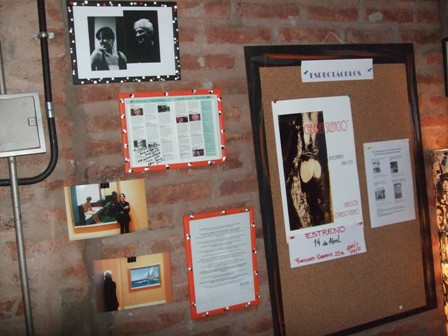
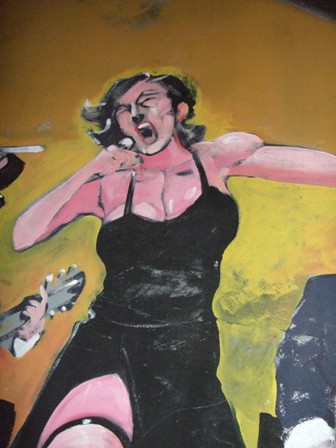

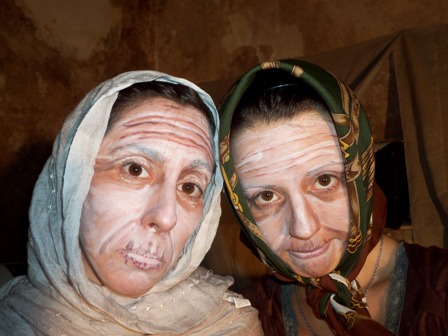

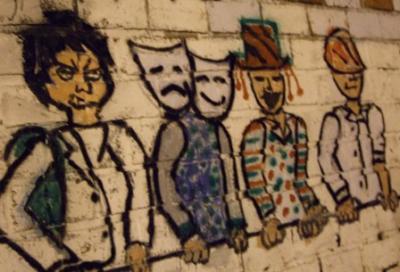
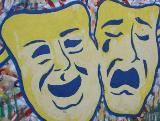
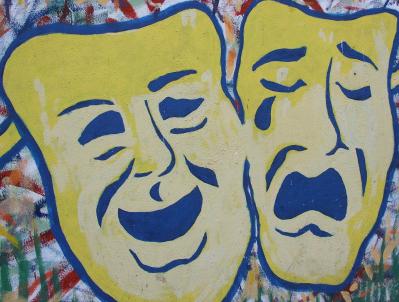



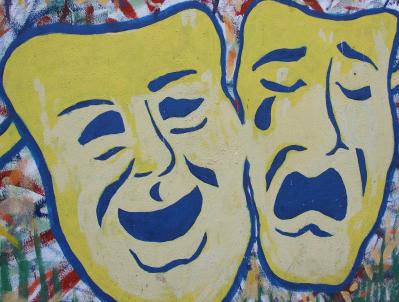

 The Hopkins Creative Language Lab announces a free demonstration class and the initiation of a workshop on acting and storytelling, on March 29th at 3 p.m., in Buenos Aires City.
The Hopkins Creative Language Lab announces a free demonstration class and the initiation of a workshop on acting and storytelling, on March 29th at 3 p.m., in Buenos Aires City. 